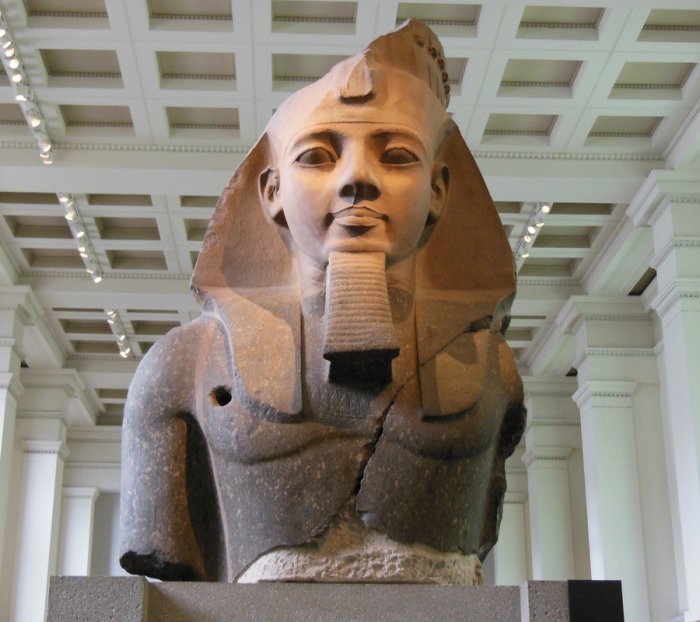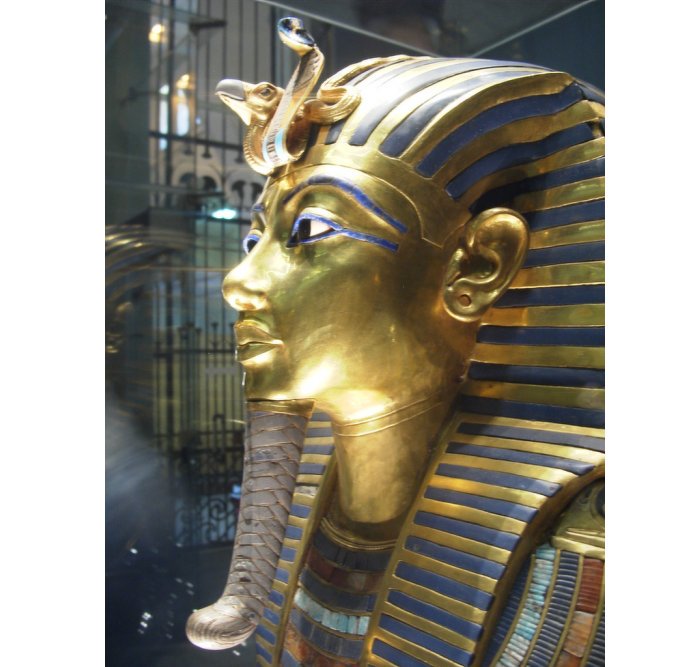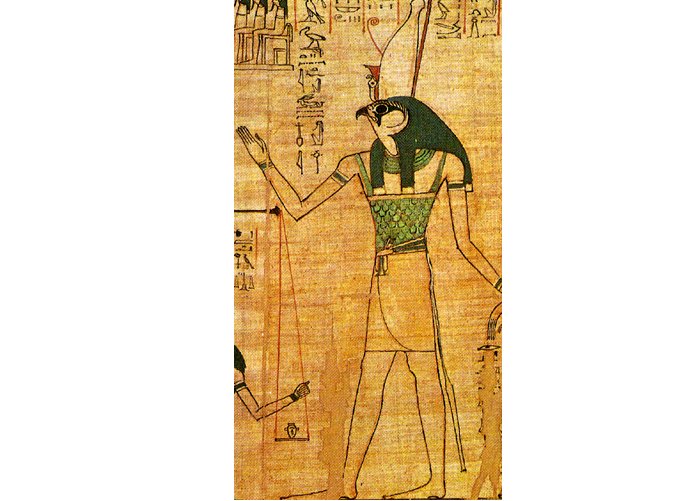10 Fascinating Facts About Pharaohs
Ellen Lloyd - AncientPages.com - In ancient Egypt, pharaohs were considered to be both divine deities as well as mortal rulers. The ancient Egyptian empire lasted for thousands of years and over this period of time, there were at least 170 pharaohs in all. According to historical records, Menes was the first pharaoh of Egypt and Cleopatra VII was the last.
In this article, we have put together 10 fascinating facts about pharaohs. Some of the facts are well-known, but there are also a few that are quite surprising.
1. The Term “Pharaoh” Was Not Used Until About 1200 B.C.
The term 'pharaoh' is the Greek form of the Egyptian 'pero' or 'per-a-a', which was the designation for the royal residence and means `Great House'. It was not used until about 1200 B.C. The early monarchs of Egypt were not known as pharaohs but as kings. It was first during the time of the New Kingdom and onwards the word pharaoh it was used to refer to the king himself.
2. Long And Hard Training Was Required To Become A Pharaoh
To become a pharaoh was by no means an easy task. It required a long period of hard training that started were very early in a prince’s life. Young children went through a series of lessons. Many of these lessons focused on building physical strength because the pharaoh often fought at the head of his army. Princes went to the royal stables where they learned how to ride and break wild horses. They also ran long foot races to build endurance and went on hunting and fishing expeditions. In time, a prince hoped to persuade a pharaoh to take him on as his ‘co-regent’. When a pharaoh died, control went to his co-regent.
3. Only A Pharaoh Was Allowed To Make Offerings To The Gods
The pharaohs were also the high priests and made daily offerings to the gods. Only the kings and priests were allowed to enter the temples which were believed to house the gods whose spirits resided in their statues.
It was believed that pharaohs were the only people who were allowed to approach and touch the gods. Pharaohs are the only people shown making offerings to the gods in temple wall paintings.
4. Pharaohs Were Always Depicted With A Beard
Pharaohs always had a beard. In most cases, it was a false beard. In real-life, most Egyptian men were clean-shaven, but pharaohs, even the female ones, wore fake beards. Usually, the beards were plaited like a big braid. It was believed that the beard let the pharaoh connect closer to the gods.
See also:
Ancient Egyptian Men Used Eye Makeup For Many Reasons
Ancient Egyptians Played Bowling 5,000 Years Ago
Egyptian Blue: World’s Oldest Artificial Pigment
5. The Pharaoh Had The Greatest Power In Ancient Egypt
No-one was as powerful as the pharaoh in ancient Egypt. The pharaoh was completely in charge of law and order, trade and industry, and the taxation of the temple lands and private estates. The pharaoh was also the head of Egypt’s legal system. If an Egyptian felt he had been wronged, he could appeal directly to the pharaoh for justice.
6. The Pharaoh Wore A Nemes Crown
Egyptian pharaohs wore ceremonial clothes and several symbols indicating their power and position in Egyptian society. A Nemes crown was a striped head cloth that covered the entire back of the head and neck. On top of the Nemes crown was uraeus, an upright cobra.
See also: 12 Ancient Egyptian Symbols Explained
The cobra was a sign that meant the pharaoh was ready to strike at his enemies with venom at any time. The uraeus is the symbol of the ancient Egyptian goddess Wadjet. Other important symbols used by the pharaohs were the crook and the flail. The crook shows that the pharaoh leads and protects his people. Moreover, the flail ia a tool that helps to separate grains from their husks so it symbolizes the pharaoh’s role as the provider of food for his people.
7. Pharaohs Were Always Depicted And Young And Handsome Even If They Were Old And Fat
It really didn’t matter if the pharaoh was fat or utterly ugly. He was always depicted as a young handsome man in ancient Egyptian art.
8. Pharaoh Was The Human Form Of Sky God Horus
God Horus
Ancient Egyptians believed that the pharaoh was the human form of sky Horus, and then when he died, the dead pharaoh was the human form of Osiris. More generally, Horus was a sky god, the son of the sun god, Ra. He was the god of war and the god of protection against evil. A lot of people carried good luck charms in the shape of the eye of Horus, to watch out for their safety.
9. All Pharaohs Wore Makeup
Both male and female pharaohs wore makeup. They painted the eye area with black kohl from ground ores (metal-bearing mineral), not just for beauty but also to reduce light reflection. Aside from considering beauty as holiness, they needed to be comfortable under the northern Nile Valley’s bright sunshine. They also believed that by lining their eyes with kohl and creating an almond-shape, their eyes would resemble the eyes of the god Horus. As such, the resemblance would enable them to protect themselves against evil spirits and eye diseases. Pharaohs also darkened their eyebrows and eyelashes, and they preferred to apply green or blue eye shadow.
Frescoes discovered in ancient Egyptian temples illustrating daily life reveal men often wore makeup. In fact, it’s almost impossible to find a portrait of an ancient Egyptian whose eyes are not decorated.
During all periods and dynasties, eye makeup was a daily prerequisite for both men and women.
10. Pharaohs Spent Their Reigns Preparing For Their Death
Afterlife was in many ways just as important as real-life to the pharaohs who spent their reigns preparing for their death.
Pharaohs built tombs to be the homes of their dead spirits so they could still live well even in the afterlife. The construction of their tombs or pyramids would begin as soon as they took the throne. Tomb of Pharaoh Seti I is the largest tomb in the Valley of the Kings.
Written by - Ellen Lloyd - AncientPages.com
Copyright © AncientPages.com All rights reserved. This material may not be published, broadcast, rewritten or redistributed in whole or part without the express written permission of AncientPages.com
More From Ancient Pages
-
 Mysterious Nine Worlds Of Yggdrasil – The Sacred Tree Of Life In Norse Mythology
Featured Stories | Mar 8, 2017
Mysterious Nine Worlds Of Yggdrasil – The Sacred Tree Of Life In Norse Mythology
Featured Stories | Mar 8, 2017 -
 Dinosaurs Were On The Up Before Asteroid Downfall – Study Finds
Archaeology | Dec 8, 2022
Dinosaurs Were On The Up Before Asteroid Downfall – Study Finds
Archaeology | Dec 8, 2022 -
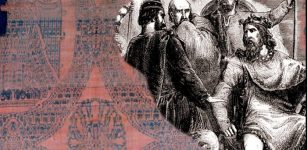 Ancient Textile Mystery: King Canute Enshrined In His Own Clothes But Found In His Brother’s
Artifacts | Oct 5, 2020
Ancient Textile Mystery: King Canute Enshrined In His Own Clothes But Found In His Brother’s
Artifacts | Oct 5, 2020 -
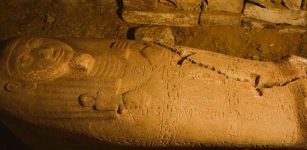 Sarcophagus Of King Ramses II’s Head Of Treasury Found In Saqqara, Giza
Archaeology | Sep 20, 2022
Sarcophagus Of King Ramses II’s Head Of Treasury Found In Saqqara, Giza
Archaeology | Sep 20, 2022 -
 Manannán Mac Lir – Irish God Of Sea, Healing, Weather And Master Of Shapeshifting
Celtic Mythology | Mar 2, 2023
Manannán Mac Lir – Irish God Of Sea, Healing, Weather And Master Of Shapeshifting
Celtic Mythology | Mar 2, 2023 -
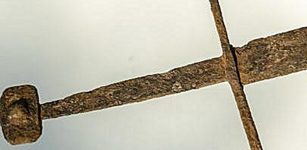 Medieval Well-Preserved Sword Discovered In A Peat Bog In Poland
Archaeology | Jun 21, 2017
Medieval Well-Preserved Sword Discovered In A Peat Bog In Poland
Archaeology | Jun 21, 2017 -
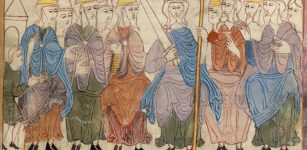 Anglo-Saxon Kings Were Mostly Vegetarians Before Vikings Settled In England
Archaeology | Apr 21, 2022
Anglo-Saxon Kings Were Mostly Vegetarians Before Vikings Settled In England
Archaeology | Apr 21, 2022 -
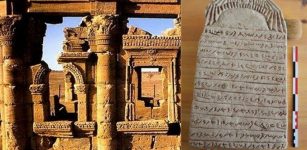 Ancient Napata And Meroe Kingdoms Reveal Secrets Of Queen Tiye And Goddess Maat
Archaeology | Mar 7, 2018
Ancient Napata And Meroe Kingdoms Reveal Secrets Of Queen Tiye And Goddess Maat
Archaeology | Mar 7, 2018 -
 Remarkable 700-Year-Old Ship Found In Estonia Is One Of The Most Important Archaeological Discoveries In Europe – Scientists Say
News | Apr 22, 2022
Remarkable 700-Year-Old Ship Found In Estonia Is One Of The Most Important Archaeological Discoveries In Europe – Scientists Say
News | Apr 22, 2022 -
 Stunning 2,400-Year-Old Mask Of God Dionysus Unearthed In Ancient City Of Daskyleion
Archaeology | Sep 7, 2020
Stunning 2,400-Year-Old Mask Of God Dionysus Unearthed In Ancient City Of Daskyleion
Archaeology | Sep 7, 2020 -
 Ancient Mayans Used Saunas For Healing Purposes
Ancient History Facts | May 12, 2016
Ancient Mayans Used Saunas For Healing Purposes
Ancient History Facts | May 12, 2016 -
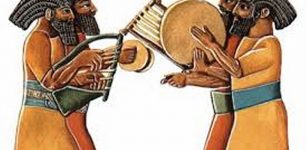 First Record Of Ancient Music Of Babylon
Civilizations | Dec 19, 2014
First Record Of Ancient Music Of Babylon
Civilizations | Dec 19, 2014 -
 Karakorum – Genghis Khan’s Headquarters And Important City In History Of Silk Road
Civilizations | Mar 26, 2016
Karakorum – Genghis Khan’s Headquarters And Important City In History Of Silk Road
Civilizations | Mar 26, 2016 -
 Vodyanoi: Evil Water Spirit In Ancient Beliefs Of The Slavs
Featured Stories | May 23, 2019
Vodyanoi: Evil Water Spirit In Ancient Beliefs Of The Slavs
Featured Stories | May 23, 2019 -
 Enigma Of The Chime Hours And People Who Can See Beyond The Visible Realm
Featured Stories | Jan 21, 2025
Enigma Of The Chime Hours And People Who Can See Beyond The Visible Realm
Featured Stories | Jan 21, 2025 -
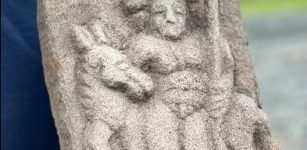 Carved Stone Depicting Mystery Horseman Unearthed At Roman Vindolanda, Hadrian’s Wall
Archaeology | Jul 1, 2021
Carved Stone Depicting Mystery Horseman Unearthed At Roman Vindolanda, Hadrian’s Wall
Archaeology | Jul 1, 2021 -
 Ancient Mystery Of The Oghars – An Unusual And Little-Known Lost Race
Civilizations | Mar 19, 2019
Ancient Mystery Of The Oghars – An Unusual And Little-Known Lost Race
Civilizations | Mar 19, 2019 -
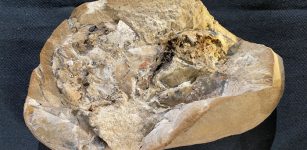 380-Million-Year-Old Heart – The Oldest Ever Found Sheds New Light On Evolution Of Human Bodies
Archaeology | Sep 16, 2022
380-Million-Year-Old Heart – The Oldest Ever Found Sheds New Light On Evolution Of Human Bodies
Archaeology | Sep 16, 2022 -
 Ancient DNA Reveals How European Skin, Eye, And Hair Color Evolved Over The Past 45,000 Years
DNA | Feb 24, 2025
Ancient DNA Reveals How European Skin, Eye, And Hair Color Evolved Over The Past 45,000 Years
DNA | Feb 24, 2025 -
 Controversial Theory Suggests Atlantis Was In Scandinavia – Surprising Evidence Presented By Ancient Writer
Featured Stories | Sep 5, 2018
Controversial Theory Suggests Atlantis Was In Scandinavia – Surprising Evidence Presented By Ancient Writer
Featured Stories | Sep 5, 2018


